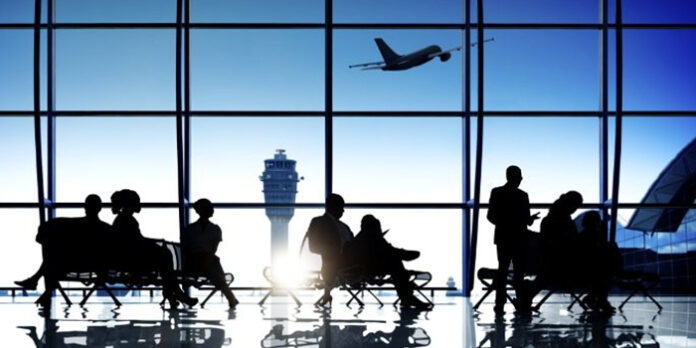The latest and greatest notion attempting to gain traction in the aviation business is experiencing an identity issue. If not handled swiftly, this situation has the potential to jeopardise billions of dollars in investment and stymie significant and much-needed efficiency improvements for the aviation community; it will eventually serve as yet another spectacular example of an industry-wide technological project gone awry. On the one hand, the tremendous flood of new technology linking aircraft ‘nodes’ with the larger aviation ecosystem has proven spectacular. Despite this, with a bewildering array of goods and buzzwords enticing compartmentalised, ‘technology-first’ airline divisions, comprehensive strategic and commercial results have been disregarded. Although the full benefits of a comprehensive airline eEnablement strategy are genuine, achieving them requires careful research and focused planning. Failures are all too prevalent among those stakeholders who have tried. Meanwhile, many more have been paralysed by the fear of failing on such a huge scale. Finally, eEnablement is a unique organisational and technical issue that the sector has never encountered before. It will be important for both airlines and suppliers to reconsider ‘business as usual’ in order to provide the agility and efficiency required to compete in the twenty-first century.
The crisis of identity:
Whether referred to as ‘The Networked Aircraft,’ ‘The Connected Aircraft,’ ‘In-Flight Connectivity (IFC),’ ‘Cabin Connectivity,’ or ‘e-Aircraft,’ the rapid introduction of advanced IT systems on-board aircraft has made airlines eager for new operational efficiencies and financial gains. In response, the industry has responded with exciting new technologies that enhance connectivity while producing mountains of data. In order to provide ‘Big Data’ solutions for airlines, aircraft OEMs have been keen to collect data and harness analytics from the airframe and critical systems. Boeing, in fact, created the term “eEnablement” during the introduction of the 787 in 2003. Today, however, too many airlines want to switch off ‘Big Data’ because they can’t see any inherent value in the gigabytes of data that are driving up 787 ACARS expenses nearly 20-fold. Identifying, prioritising and pursuing a number of strong strategies and business cases for connecting airlines is still an issue that needs to be addressed by all stakeholders.
What exactly is eEnablement?
eEnablement, in its purest form, is not just another ‘technology-first’ programme like Digital Data and Electronic Flight Bags (EFB), which came before it. Rather, it is motivated by well-defined business goals that are part of an overall strategy for the organisation. eEnablement is the means by which data generation, subscription, analysis, consolidation and value-added services are made available to improve operational efficiency, capacity and financial benefits for all airline divisions. A disciplined approach, cultural and organisational subtlety understanding, and experience are all required to extract value from the constantly rising data troves accessible to airlines today and in the future. Of course, Boeing’s 787 and Airbus’s A350 established the framework for eEnablement; yet, many operators have realised that operating next-generation aircraft alone does not constitute an airline eEnabled. Not only is managing the half-terabyte of new data generated by each flight a huge issue, but operating these ‘connected’ aircraft alongside ‘unconnected’ vintage aircraft has added enormous complexity to airline operations. In 2025, new ebuild-enabled aircraft will account for only about 34-36% of the commercial fleet’s use, despite a rapid production schedule by OEM manufacturers.
Why is eEnablement important?
The airline industry will become very difficult to sustain in the next five years if it does not implement eEnablement strategies. The current air transport industry is characterised by competition, even if the view of Captain Baldursson may have been misunderstood. While rising air travel demand has nearly doubled global airline revenues over the previous decade, from $748 billion in 2014 to $ 1051 billion in 2022, rising passenger counts have swamped airports and airspace. Airlines must now distinguish themselves from the competition by running extremely efficient operations and providing great customer service. Congestion in the air transport infrastructure has become a norm, despite significant advances in airspace management technologies, By 2034.
Who stands to gain from eEnablement?
The eEnablement initiative involves not only connecting the various airlines’ resources and stakeholders or ‘nodes’ on a network; it is also necessary to understand their relationships, as well as how data flowing across them could be of value for operational and strategic results. The prioritisation of Cabin Wi-Fi installations has clearly demonstrated the crucial relevance of an airline’s connection with the passenger.
The fragmented planning horizons of suppliers:
Suppliers are also hampered by engrained conventions that have jeopardised eEnablement. Long concept-to-product lifecycles, resulting from stringent aircraft quality and safety standards, are extremely difficult to navigate when multiple technologies must be developed to fulfil airlines’ demanding short-term planning horizons. Equipment vendors are left to try to read the market and rush through development, hoping that airlines will catch up and identify use cases for already produced technologies. Because of attractive bright packaging, suppliers with a speciality in a certain functional area have created preferred relationships with the functionally-aligned airline department in many circumstances.
Regional Analyses:
The connected aircraft market is currently dominated by North America. During the projected period, the region is also predicted to develop. A major growth factor for the region is an increasing number of aircraft orders from this area, as well as a growing commercial use of connected aircraft technology. In particular, in the US, where modernization and upgrading of existing technologies is a top priority, connected aircraft technology has been gaining momentum within the military.
Recent Development:
Delta Air Lines chose Viasat’s industry-leading, next-generation Ka-band satellite in-flight connectivity (IFC) system for more than 300 mainline narrow-body aircraft in January 2021, including new deliveries and retrofits on A321ceo, 737-900ER, and select 757-200 aircraft. Delta aims to install Viasat equipment on these aircraft beginning in the summer of 2021, with the potential to add other fleets.
